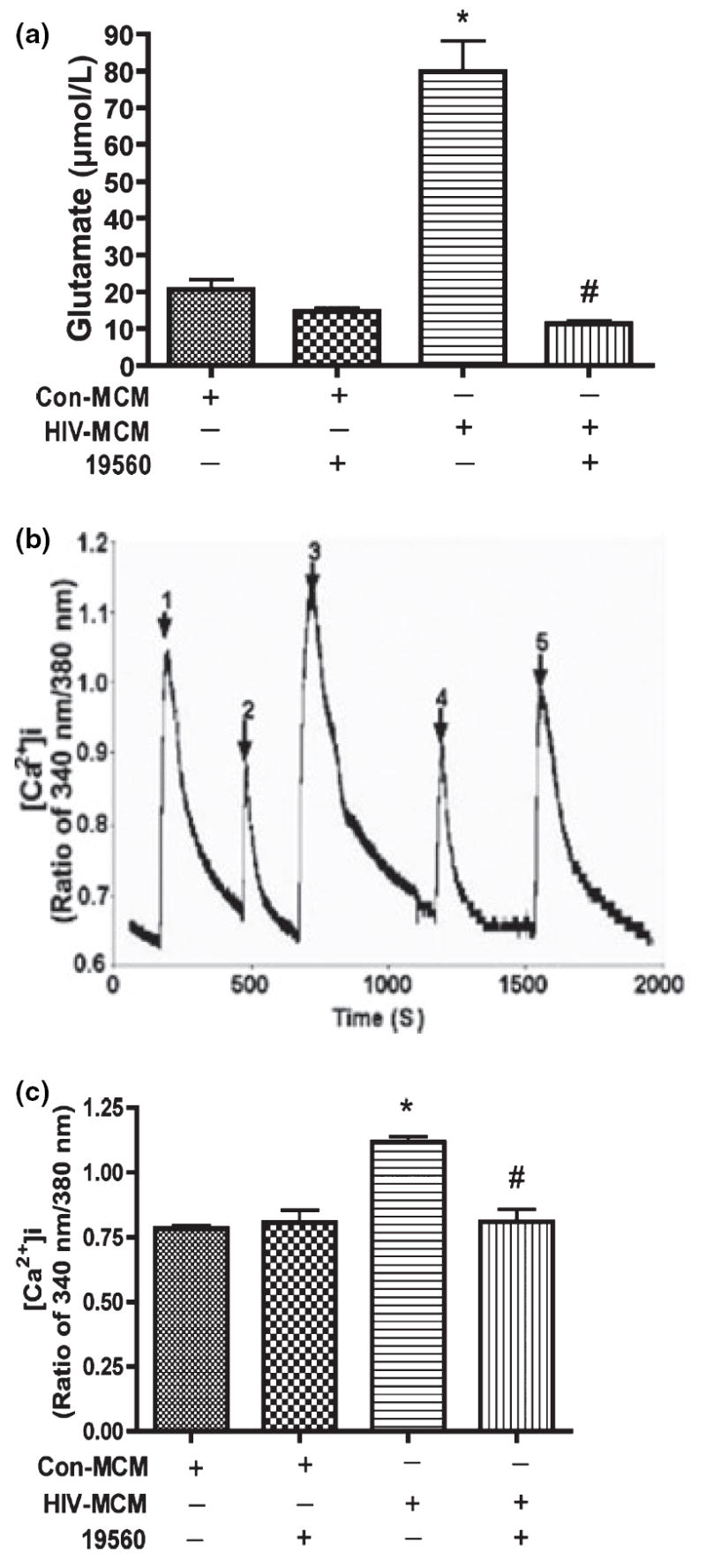Fig. 4.

The inhibition of glutaminase activity decreases glutamate production and prevents over-stimulation of NMDA receptors by glutamate. Human MDM were infected with HIV-1ADA for 7 days. Cells were washed three times and incubated for 24 h in serum-free neurobasal media which contains 5 mmol/L glutamine and 10 μmol/L glutaminase inhibitor (19560) as indicated in Fig. 4a. Samples were stabilized with 3% perchloric acid and potassium carbonate treatment. The concentrations of glutamate were determined by RP-HPLC. All data are expressed as absolute concentration of glutamate (μmol/L) in MCM, and results showed are the mean of triplicate samples, *denotes p < 0.001 in comparison to control; #denotes p < 0.001 in comparison with HIV-MCM. Rat cortical neurons were loaded with Fura-2 and monitored for calcium influx by micro-fluorescent imaging. (b) Filtered control and HIV-1 MCM which contains glutaminase inhibitors (19560 and 20638) were tested to see the responses of NMDA receptor, 1: Con-MCM; 2: Con-MCM+19560; 3: HIV-MCM; 4: HIV-MCM+19560; 5: HIV-MCM+20638. (c) The graph showed the statistical analysis results, and these results are expressed as average ±SD and are representative of three independent experiments, *denotes p < 0.01 in comparison to control; #denotes p < 0.01 in comparison with HIV-MCM.
